2011 Environmental Merit Award Recipients
- Dedication
- Welcome
- Lifetime Achievement
- Individual
- Environmental, Community, Academia, & Nonprofit
- Governmental
- Business, Industry, Trade or Professional
- Special Recognition
- Special Thanks
Dedication

We salute the men and women of our Armed Forces
To the citizens of the Gulf Coast as they work to restore their communities after the 2010 BP oil spill.
We stand with the people of Japan as they overcome the devastation of the earthquake and tsunami in their country.
Our thoughts are with the Americans in the southeastern region of our country who are coping with the destruction left behind by the recent deadly tornadoes.
"It was important to me to be in my hometown of New Orleans on the anniversary of the rig explosion that claimed 11 lives and led to the largest oil spill in our nation's history. It was inspiring to see some of the recovery work that is already taking place and to be reminded of the resolve of the people here. With the memory of this tragedy still clear in our minds, we are dedicated to working with gulf residents to rebuild this region, restore its fragile wetlands that are the foundation of the gulf's thriving ecosystem, and re-envision a better future for gulf communities."
- Lisa P. Jackson, Administrator
U.S. Environmental Protection Agency
April 20, 2011
Welcome
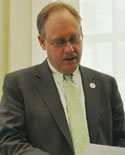
Welcome to the 2011 Environmental Merit Awards Ceremony
Congratulations to all of our 2011 Environmental Merit Award winners. These awards are near and dear to my heart because they celebrate and underscore the importance of environmental stewardship in New England.
In these challenging economic times, many environmental priorities may seem to take a back seat. To me, it is very clear that these two dimensions of our society are intrinsically linked. The healthier the environment is, the more investment is possible and vice versa.
As stewards for the New England environment, our 2011 award winners understand this link. I appreciate the risk taking and innovation your work often requires. You are the champions who are making real differences in communities across the region, and you are helping to spread awareness of the importance of environmental investment right now.
At EPA, we work for the environment every day, and it is always so rewarding to witness other people volunteering to join us as we strive to achieve our common goals. All of us at EPA New England take great pride in your work and we thank you for being the leaders you are.
Congratulations to all of today's recipients.
Sincerely,
Curt Spalding
Regional Administrator, EPA New England
Lifetime Achievement
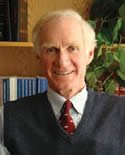
Brownie Carson
Under the capable guidance and principled vision of Brownie Carson, the Natural Resources Council of Maine (NRCM) has won some of the most significant victories for the protection of Maine's waters, air, forests, and wildlife for future generations. For more than two and a half decades, Brownie has served as executive director of the Natural Resources Council of Maine (NRCM), working to make the environment healthier and safer for the people and wildlife of Maine. Many of the state's first-in-the-nation environmental laws are the product of NRCM's leadership on difficult issues during Brownie's tenure. Such laws include expansion of Maine's Bottle Bill to include non-carbonated and alcoholic beverages, and a law requiring electronics manufacturers to collect and safely recycle toxics-laden computer monitors and television sets. In 1999, a 10-year campaign culminated in removal of the Edwards Dam from the Kennebec River, a victory secured by a coalition led by NRCM. Under Brownie's leadership, NRCM has repeatedly brought together coalitions that agreed on protecting the resources that make Maine's quality of life possible and set an example of how a group of determined and caring individuals can focus careful attention to bring about the best possible outcome for people and the environment. Brownie's passion for conservation and the environment has made him one of the most respected voices on environmental policy, as he helped build the Natural Resources Council of Maine and into one of the nation's most effective state-based environmental advocacy groups. For more than two decades, Brownie has been at the center of the action for the significant environmental battles and "sustainability" initiatives that protect Maine's waters, air, woods and wildlife, and the health of Maine people. In doing so he has inspired and mobilized Maine citizens to make their voices heard on decisions that will determine the future of the Maine they love.

Andy Falender
During his 22-year tenure as President of the Appalachian Mountain Club (AMC), Andy Falender is credited with turning around the nation's oldest outdoor recreation and conservation organization, increasing its membership and endowment as well as embarking on an ambitious agenda to expand trails stewardship, youth programming, conservation advocacy and new outdoor experiences for the public. Andy oversaw AMC's growth as a regional conservation leader in New Hampshire and Maine and across the Northeast. While AMC continues its historical connection to the White Mountain National Forest (WMNF), the Club founded the Northern Forest Alliance during Andy's tenure, focusing its membership on the Massachusetts Forest and Parks Alliance's issues and taking a leadership role in creating the Mid-Atlantic Highlands Coalition, which resulted in passage of the Highlands Conservation Act. Ultimately, AMC applied its conservation and recreation management expertise to direct ownership and conservation of 66,000 acres of forest land in Maine's 100-Mile Wilderness through its ongoing Maine Woods Initiative.
Recent conservation efforts in which Andy took a significant leadership role include the launch of Mountain Watch "citizen-scientist" program, enabling members and guests to measure indicators of air quality and climate change; AMC and partners' advocacy to designate for preservation an additional 34,500 acres of wilderness in the White Mountain National Forest; AMC's 2007 $1,004,484 multi-year and multi-organization NOAA research grants on air pollutant and climate change impacts to high elevation ecosystems of the Northeastern mountains; and, opening the Gorman Chairback Lodge and Cabins in 2010, a new outdoor recreation destination with a LEED-registered design.
Over the last ten years, AMC has conserved over 1.5 million acres of land throughout the region, both directly and through partners and maintains 1,500 miles of trails, provides outdoor experiences to over 45,000 young people annually. Today, the organization focuses on issues vital to the mountains, rivers, and trails of the region, including air quality, wind power siting, climate impacts on alpine ecosystems, and riverway protection and stewardship.

Glenn Haas
Glenn Haas served the citizens of the Commonwealth for 40 years while holding many leadership positions in the Massachusetts Department of Environmental Protection and in its predecessor agencies. At DEP, he was the Assistant Commissioner for the Bureau of Water Quality Management, where he managed the growth and maturity of the Massachusetts State Revolving Fund (SRF) program. He oversaw all aspects of the state's surface and groundwater water quality monitoring programs, including standards, TMDLs and monitoring and managed the DEP's quite visible and successful drinking water program. Glenn was integral to the success of the Construction Grants program that built wastewater treatment facilities to improve the environment and public health. Most notable among his achievements was his work on the Massachusetts Water Resources Authority's Deer Island facility. His management and decision-making skills kept the project on track and led to its successful design, construction and operation. His role in this and the launch of the SRF program have contributed to significant environmental and public health improvements throughout the Commonwealth. His peers in the wastewater field elected him to a term as President of the New England Water Environment Association. He served his New England counterparts as Chairman of the New England Interstate Water Pollution Control Commission (NEIWPCC) after which he went on the Board of the Association of State Water Pollution Control Agencies (ASWIPCA).
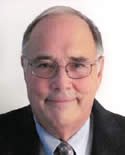
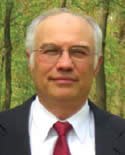
Richard Harris and Peter Fraboni
Richard Harris, Director, and Peter Fraboni, Associate Director, have dedicated their careers to the environment. They established Harbor Watch/River Watch (HW/RW) in 1986 as a citizen's monitoring program that gathered data on hypoxia in local harbors. In 1993, the organization became part of Earthplace, a nature and science museum with a mission to educate the community about the environment. Founded in 1958 and accredited by The American Association of Museums, Earthplace maintains a 62-acre wildlife sanctuary with exhibits, trails and an interactive natural history museum, complete with wildlife dioramas and live wildlife for public viewing. It also hosts public nature programs and events.
Harbor Watch/River Watch connects science and action, identifying problems in watersheds and interacting with experts equipped to remediate them. There have been many successes over the past 23 years, and the program has expanded to include dozens of volunteers, mentors and interns. Each year several students spend time learning and conducting important monitoring and sample collection. During 2009 and 2010, HW/RW hosted more than 40 students, giving them a base of education for their continued learning.
Some of the organization's annual activities and achievements include cleanups of local tributaries; monitoring tributaries for various chemical, physical and microbial parameters; organizing a local Earth Day event by inviting many vendors and developing educational displays; hosting kayak trips educating the public about the local tributaries and their resources; and conducting resource studies and population surveys for fisheries, lobster, freshwater invertebrates as well as including water quality testing for dissolved oxygen (DO), nutrients, and phosphorus. Recent achievements include establishing a water quality laboratory that was certified by the State of Connecticut and the EPA along Norwalk Harbor to monitor water quality from the Norwalk River to the harbor and identified pipes. Results were used to monitor pollution to the nearby bathing beaches and shellfishing areas of Long Island Sound.
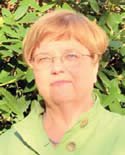
Barbara A. Kwetz
Barbara A. Kwetz began her career with transportation and air quality issues at the Pioneer Valley Planning Commission in 1975 and joined the Massachusetts Department of Environmental Protection's (DEP) Division of Air Quality Control in 1978. In November 2010, Barbara retired from her most recent position as Director of the Division of Planning and Evaluation in the Bureau of Waste Prevention, where she played a key role in planning, managing and evaluating Massachusetts' air quality, toxics use reduction and solid waste programs. During her career, she was instrumental in developing programs that made the state a national leader in environmental protection. Her vision of a "clean air future" for the Commonwealth included pushing for the need to control mobile source emissions.
Under Barbara's leadership, Massachusetts was the first state to adopt California's Low Emission Vehicle standards for motor vehicles, which resulted in cleaner vehicles in the state starting with model year 1995. She also assisted in the development of other groundbreaking mobile source emission control strategies, including the parking freeze programs for Boston, Cambridge and Logan Airport, mitigation of the air quality impacts of the Central Artery/Third Harbor Tunnel construction, and the tunnel ventilation regulation. Her efforts produced the first-ever inventory of mobile source emissions in Massachusetts, plans to reduce vehicle miles traveled, and the state's first automobile inspection and maintenance program. She has been a leader in efforts by the Conference of the New England Governors and Eastern Canadian Premiers to protect the environment and public health from pollution sources that cause acid rain, mercury pollution and climate change. She has worked to reduce the impacts of acid rain through annual reductions in SO2 and NOx from power plants across the country that burn fossil fuels. Recognizing the importance of air toxics to public health and environmental quality, Barbara started to work with the DEP's Office of Research and Standards in the mid-1980's to develop guidelines for these contaminants in air, at a time when EPA had not yet developed extensive air toxics guidance. She wrote the Air Toxics Implementation Policy that is still in use today.

Leslie J. Mehrhoff
(posthumous)
The late Leslie J. Mehrhoff of Willington, Conn. was an outstanding botanist who was well known in Connecticut, New England and the nation. He was an accomplished and enthusiastic naturalist and received his graduate training at the University of Connecticut. He worked for many years with Connecticut's Department of Environmental Protection before becoming the manager of the Torrey Herbarium at the University of Connecticut. During his career, Les inspired, encouraged, mentored and educated many people, influencing botanists, biologists, legislators, students and gardeners young and old. His innumerable presentations on biodiversity and the importance of protecting species and their natural communities included his renowned high-quality photographs. He worked tirelessly to protect endangered species and to prevent the negative impacts from invasive species. In recent years, he traveled to China to promote control of invasive species. He had a spirited sense of humor, and his sense of wonder about the natural world gave him a childlike innocence. Les' life work made incalculable contributions to the protection of biodiversity and ecosystems throughout Connecticut and New England. He was instrumental in gaining passage of Connecticut's Endangered Species statutes, in publishing The Connecticut Butterfly Atlas and in development of The Atlas of Breeding Birds of Connecticut, and The Atlas of Ground Beetles of Connecticut (Coleoptera: Carabidae, excluding Cicindelini). He retired in 2009 and passed away in 2010.

Mary Sinnamon Michelman
(posthumous)
Mary played a critical role in protecting Acton, Massachusetts' drinking water and streams and was a leader in many civic environmental organizations, particularly the Acton Citizens for Environmental Safety (ACES). As its president and main technical contact, Mary reviewed, on a volunteer basis, EPA's actions at the W.R. Grace Superfund site in South Acton. In her role as the non-governmental organization technical liaison for Acton, she attended countless meetings about the site and diligently updated town officials and the community on progress made to remediate the drinking water contamination caused by W.R. Grace. She applied her scientific background and her attention to detail in providing comprehensive and important comments to EPA and the town to ensure the remedial actions were protective of Acton's drinking water. Mary spent many hours studying complicated monitoring and feasibility reports on the cleanup of the site, and in one of them, she was able to show that an additional plume was traveling to the northeast. As a result, an additional cleanup plan was established targeting that area.
When she moved to Acton in the 1990s, she founded and led the Acton Stream Teams, a citizen's outreach project of the Organization for the Assabet River (OAR). The purpose of the Acton Stream Teams was to educate citizens about the value of Acton's streams, and the need to protect their quantity and quality. Mary and the Acton Stream Teams received a Certificate of Appreciation from EPA in 1998 for coordinating and conducting a significant amount of volunteer work surveying Acton's streams for pollution sources. In addition, she advocated for the purchase of conservation land, institution of hazardous waste collection days, increases in buffer zones around wetlands and streams, and most recently, support for a stormwater bylaw.
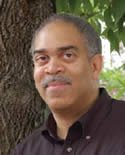
Mark Mitchell, M.D., MPH
Founder and President of the Connecticut Coalition for Environmental Justice, with local chapters in Hartford, New Haven and Bridgeport, Dr. Mitchell has worked in the environmental and public health sector for over 20 years, providing assistance to low-income and communities of color. He has dedicated his life to teaching these impacted communities ways to reduce and/or prevent disproportionately higher rates of disease. Through grassroots organizing and leadership development in low-income urban communities, Dr. Mitchell has demonstrated a sustained commitment to improving the environment and public health.
During his four years as Director of the City of Hartford's Health Department, Dr. Mitchell became increasingly aware that many diseases on the rise were linked to the environment and took steps to address this. He lobbied the Connecticut General Assembly for creation of a statewide asthma data collection system and persuaded the City of Hartford to declare an Asthma Emergency, which funded projects to address the high rates of asthma in Hartford. One is the Asthma Speakers Bureau, which educates communities on environmental contributors to asthma and how to best manage the disease. In addition, Dr. Mitchell leveraged the ordinance with a recycling facility permit application that prompted the Connecticut Resource Recovery Authority to retrofit their heavy duty diesel equipment at all their solid waste treatment and storage facilities and to fund the installation of diesel retrofits on 27 municipal solid waste trucks which now run 90% cleaner.
In 2008, Dr. Mitchell collaborated with approximately 30 organizations to enact the state's first environmental justice law that defines environmental justice communities, specifies major pollution facilities and requires enhanced public outreach prior to any permit decision by the state DEP and the Connecticut Siting Council. It encourages industry, the local chief elected official and the environmental justice community to negotiate an environmental benefit agreement to offset potential additional pollution emissions or burdens associated with the proposed permit. Working with the Coalition for a Safe & Healthy CT, his efforts helped pass legislation to reduce lead and asbestos in children's toys sold in the state that same year.
Dr. Mitchell has served on the U.S. EPA's National Environmental Justice Advisory Board and is currently a member of the U.S. EPA's National Advisory Council on Environmental Policy and Technology, as well as Chair of the Community Advocacy, Leadership and Research Group of the US CDC/ATSDR National Conversation on Public Health and Chemical Exposures. He is the founding member of the City of Hartford's Commission on the Environment and a member of the Capital Region Council of Government's Transportation Committee.
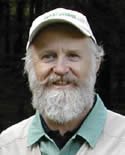
Dr. Frederick T. Short
Fred has been a strong voice for the conservation and protection of Great Bay and its resources for almost 30 years. He has authored and co-authored close to 100 peer-reviewed scientific journal articles and eight books. His expertise is in seagrass conservation and restoration, and he is considered by his peers to be an international expert. He published articles on such topics as "How Climate Change will affect Seagrasses" and "The Global Decline of Seagrasses." In addition, he has started a global science-based monitoring program that is called SeagrassNet. Due to Fred's diligence, SeagrassNet monitoring sites have been developed in 115 locations in 32 countries. Fred has given his time and expertise to help facilitate the preservation and restoration of marine ecosystems. He serves on numerous official and ad hoc advisory councils and frequently is asked to be a peer reviewer for several journals and on grant applications.
Individual
Joseph Bevilacqua
Merrimack Valley Chamber of Commerce, Lawrence, MA
Joe Bevilacqua has been a champion of economic development since joining the Merrimack Valley Chamber of Commerce in 1992. He recognized then that the region faced challenges due in part to rising energy costs and realized that if the 1,100 companies in the Chamber cut energy costs, they could remain competitive and be models of corporate social responsibility. As Chamber president and CEO, Joe initiated an annual energy summit focused on the importance of sustainability. He approached Nexamp, a clean energy company and chamber member in 2009, with a goal to help members become more energy efficient. The Chamber and Nexamp together were awarded $500,000 in 2010 from a state energy initiative to fund the newly formed Merrimack Valley Chamber of Commerce Clean Energy Partnership. Through this partnership, Nexamp offered free energy audits, energy monitoring systems and retro-commissioning studies to 26 businesses. The partnership expects to save companies millions of dollars in energy costs. The 20 chamber companies selected have facilities totaling more than 5,000,000 square feet and paid more than $25 million in energy bills. For the first time in the state, a Chamber of Commerce, a clean energy company, the state government and the local utility companies are working in partnership on energy efficiency.
Joseph Boutin and Paul Musco
Cranston Public Schools, Cranston, RI
The Cranston Public School (CPS) district consists of 31 buildings, five of which make up the high school complex. Construction ranges from the years 1925 - 2004. Most have the original operating equipment and windows. Cranston Public Schools Energy Program started in November 2006, with Cranston Public Schools Senior HVAC Technician Paul Musco and Cranston High School West Foreman Joseph Boutin embracing the challenge immediately. They learned about each building's system and function and managed, monitored, adjusted or fixed equipment that would conserve the most energy. Energy savings to date have been achieved without expenditures going beyond the general maintenance budget and soon will reach $3 million. In 2010, 12 Cranston Public School buildings earned the Energy Star commendation, the only schools in Rhode Island to do so. Cranston High School West was one, thanks to the efforts of Paul and Joe. Both have taken the Building Operator Certification (BOC) course and maintain continuing education, and the Cranston Public School system is the recipient of an endowment from Energy Efficiency Conservation Block Grant (EECBG). Six buildings now are undergoing vast HVAC control projects. Two of the largest grants were awarded to Cranston High School West, with that campus undergoing extensive HVAC and lighting retrofits equating to over $400,000. Paul and Joe are committed to overseeing the development of these projects and take great pride in being part of these energy conservation measures and upgrades.
Daniel Geagan
City of Warwick, RI, Planning Department
As senior planner for the city of Warwick, RI, Dan Geagan has overseen many successful projects. Perhaps most impressive is the complicated land acquisition he helped guide through last year when the city obtained 41 acres of coastal land at Rocky Point that faces Narragansett Bay. Working with Pepsi and Shaw's corporations, Geagan procured $15,000 for native trees and shrubs on the land. In another project, he used Smart Growth principles to create a master plan for the Warwick Development District that involves a pedestrian-friendly development between T.F. Green Airport and the Interlink facility. This will encourage use of the new commuter rail as well as walking and bicycling. Finally, Geagan succeeded in cutting greenhouse gas emissions by up to 480 tons a year by reducing energy use in city buildings, is collaborating with the state and a private property owner to buy development rights to the 8-acre Blueberry Farm and is working with Clean the Bay and DEM to remove more than 100 tons of debris from local waterways. Geagan is a model municipal planner.
John Warner
Warner Babcock Institute for Green Chemistry, Wilmington, Mass.
John Warner has helped shape the field of green chemistry using his commitment to human health and a clean environment as well as his industrial track record as a world-class scientist and inventor. This combination allowed him to bring together groups from the environmental health community and industry to focus on designing non-toxic, safer products and processes. As a scientist, John founded the Warner Babcock Institute for Green Chemistry in 2007 in Wilmington, Mass., the first research institution solely dedicated to green chemistry alternative products and processes. In the past year, he has collaborated with numerous industrial partners to invent green chemistry alternative products and processes. He has filed over 150 patents on sustainable alternatives. As an educator, John has helped train a new generation of scientists, and through his non-profit organization Beyond Benign, he has helped create over 250 multilingual lesson plans in sustainability and green chemistry. In the past year, Beyond Benign has brought hands-on activities to more than 3,000 students in New England and trained more than 100 teachers on green chemistry lesson plans. Whether speaking to industrial CEOs, scientists, or first-grade students, John clearly conveys his vision of how to build a sustainable future.
Martin Wolf
Seventh Generation, Burlington, Vt.
As director of product sustainability and authenticity at Seventh Generation in Burlington, Vt., Martin brought lasting change to the cleansing products industry. In this job, he developed frameworks for environmental product design, while at the same time, he educated co-workers, customers and consumers about the environmental impacts of products. In the last year, many of Martin's endeavors came to fruition. In June, the consumer goods industry agreed to voluntarily stop using phosphates in auto-dish washing products. Martin testified in numerous states that these products could be made effectively without phosphates and influenced decisions by companies to voluntarily provide full ingredient disclosure on products. Martin led the development of a product scorecard in 2010, which weighs environmental, cost and performance of a product for a product score, and he worked to educate adults and youth about environmental impacts, presenting at international conferences as well as in local schools.
Environmental, Community, Academia, & Nonprofit
Boston Latin School Youth Climate Action Network
Boston, Mass.
Students at Boston Latin School are making their mark on slowing climate change. The Youth Climate Action Network has brought together students, residents and community leaders to address this challenge. Youth CAN, as the student group is called, believes young people must be involved in climate issues, and these issues must be on the curriculum if we are to have climate change and a sustainable future. In 2007 Youth CAN first organized their signature event, the Annual Global Climate Change Summit, which draws hundreds of students and educators from 70 schools in the state. In the summer of 2010, Youth CAN invited 34 teachers from 17 schools to spend a week learning how to integrate climate change and sustainability education into their curricula. Youth CAN member Rebecca Park, appointed by the mayor as youth representative to his Climate Action Leadership Committee, helped bring more than 100 young people to a half-day youth workshop. Youth CAN has proposed an innovative Green Roof & Community Learning Center on its roof that would be shared with the community. Youth CAN raised the money for the solar panels and plants installed on the school's roof. This award recognizes the combined efforts of partners involved with Youth CAN, including faculty advisor Cate Arnold and headmaster Lynne Mooney-Teta.
Essex County Greenbelt Association
Essex, Mass.
Essex County Greenbelt has conserved more than 14,000 acres of land in Essex County over five decades of land conservation. In the last ten years, it has been involved directly in protecting 75 percent of all land conserved in the region. In 2010 alone, Greenbelt completed 20 projects, conserving more than 730 acres. With more than 4,300 members, it is expanding the constituency of land conservation in the region. It owns and manages more than 250 properties, and holds more than 250 conservation restrictions. Several years ago, studies projected that the majority of undeveloped land in Essex County either would be developed or conserved within the next 10 to 15 years. The Greenbelt intervened to increase the pace of land conservation before the most important parcels were lost to development. It created a countywide conservation plan and launched the Land Conservation Outreach Initiative to introduce land conservation options and benefits to landowners. They have reached more than 3,000 owners of five acres or more of undeveloped land, representing nearly 55,000 acres. Essex County Greenbelt has been hard at work for five decades conserving the land that helps ensure clean water and air and a healthier environment.
Green Village Initiative
Dan Levinson, Westport, Conn.
The Town of Westport, Conn., and its neighbors are impressed by the work of Dan Levinson with the Green Village Initiative. In three years, he engaged an enthusiastic group of volunteers to work to protect the environment, including scientists, academics, business leaders, activists, media professionals, artists, government representatives and students. The Green Village Initiative focuses on projects with the best chance of success, including development of an historic town farm and creation of a sustainability center; promotion of community supported agriculture; creation of an edible garden at Westport High School and supervised construction of community and school gardens in Bridgeport. The group also helped Westport Public Library transform its café into a model of healthy local food and rehabilitated Westport's Sherwood Mill Pond preserve. None of this would have happened without Dan, who got it going and keeps it moving forward.
GreenUp CleanUp Organizing Team
Grace Episcopal Church, Medford, Mass.
Linda Rogers, Margaret Smist, Rachael Pettengill, Jonathan Hunt, June Pietrantoni, Ann Frenning Kossuth
The Grace Episcopal Church GreenUp CleanUp Organizing Team in Medford recognized a need in the community and mobilized more than 100 people to work on the problem. Parks in Medford lacked needed maintenance. Six individuals recognized the problem and designed a citywide 'parks cleanup' initiative in the spring of 2010. Those individuals included Linda Rogers, Margaret Smist, Rachael Pettengill, Jonathan Hunt, June Pietrantoni and Ann Frenning Kossuth. In addition, they developed a program that could be replicated in other communities to make it for others also to organize park cleanups. They worked with many organizations and businesses to organize community beautification and cleanups in eight playgrounds and parks in the City of Medford. The GreenUp CleanUp Team publicized their efforts through community email lists, the local papers, Grace Church announcements, the City Council and through the Greening Grace blog. They inspired more than 250 people in the Medford community to pick up trash, paint tables and benches, rake leaves, spread mulch and sand and generally improve public spaces in Medford. This effort spread throughout the community, and residents unaffiliated with the church volunteered to organize two additional park cleanups, bringing the number of spring cleanups to seven. Tufts University partnered with the team in the fall to sponsor an eighth cleanup last September.
Ipswich River Watershed Association
Ipswich, Mass.
The Ipswich River Watershed Association has endeavored to restore and protect the Ipswich River and nearby waterways for over two decades. It has worked creatively with other organizations, taking part in forums; and, when all else failed, it has entered into litigation. It has engaged in advocacy, education, scientific research and monitoring to help restore the river. The group provides technical assistance to help communities protect their water resources. The association's work promoting water conservation has been recognized by the EPA and others, and it is now focusing on ways to save water to save energy. Its education and outreach focus on the value of these waters, the threats they face and what people can do to protect them. The association also has 50 trained volunteers who monitor the river's quality and quantity monthly. An annual herring count and work with Mass Marine Fisheries and the University of Massachusetts helped evaluate efforts to restore the herring fishery. They are vigilant about seeing that laws are adhered to and that regulations are met.
Parties to Kendall Station
NPDES Appeal Settlement
Massachusetts Department of Environmental Protection, Conservation Law Foundation, Charles River Watershed Association, GenOn Kendall, LLC
More than a decade of work to improve the ecology of the Charles River received a major boost after a group of environmentalists, business people and government officials came together to settle a court case. Together, the parties in the Kendall Station NPDES Appeal showed that a single permit can have a dramatic effect on the restoration of a major urban waterway. The united efforts of these parties over the past two years will help protect the waters of the lower Charles River and Boston Harbor and has resulted in a fund for Charles River habitat restoration projects over the next five years. Furthermore, it will allow the power plant to continue operating economically. Despite significant disputes over the initial NPDES (National Pollutant Discharge Elimination System) permit given to the Kendall Station Power Plant, the parties were able to come to an agreement. Permit changes will result in a 95 percent reduction in Kendall Station's heat discharge and cooling water withdrawals. The permit also ends long-standing litigation. Successfully developing a consensus permit required each of the parties to understand the others' interests. Assimilating these understandings with the requirements of the Clean Water Act, the settlement parties collaborated to develop truly innovative solutions and translate them into permit conditions. These parties being recognized have helped ensure that the river will be a treasured recreational and ecological resource for future generations.
Manchester Urban Ponds Restoration Program
Manchester, NH
Manchester Urban Ponds Restoration Program has been collecting water quality data, restoring habitat and organizing volunteer cleanups for the past decade. It has promoted public awareness and stewardship of Manchester's ponds, while reducing the pollution and nutrients that compromise water quality in seven urban water bodies. The program has been at the forefront of several projects that led to improved water quality in the city. In addition, the restoration program has organized 78 cleanup events and organized 463 volunteers who have put in 1,644 hours of collecting 1,499 bags of trash.
Mount Wachusett Community College
Gardner, Mass.
Over the past several months, Mount Wachusett Community College has finished construction of two 1.65-megawatt wind turbines. This project caps a decade of renewable energy initiatives and conservation measures that have slashed the college's electrical consumption nearly in half, saving the school $4 million while shrinking its carbon footprint. Mount Wachusett Community College exemplifies how an institution can invest in clean energy, reduce our dependence on foreign oil, and ultimately address the global climate crisis. The two wind turbines are expected to generate 97 percent of the school's energy demand. Combined with the college's existing biomass heating, photovoltaic array and solar hot water, Mount Wachusett will produce nearly all of its energy on-site. The energy innovations are integrated into learning experiences for students pursuing green careers. They also elevate awareness campus-wide about the need for alternative energy solutions to reduce the country's dependence on foreign oil.
New Hampshire Small Business Technical Assistance Program
Sara Johnson, Concord, NH
Small businesses often have to spend four times more per employee to comply with environmental regulations than larger firms. To help with this challenge, the 1990 Clean Air Act amendments require states to develop programs to help small businesses comply. Recent standards, known as National Emission Standards for Hazardous Air Pollutants for Area Sources, impact small businesses tremendously. For example, EPA estimates 35,000 auto body shops may be subject to related requirements. The New Hampshire Small Business Technical Assistance Program partnered with EPA New England and the state's Automobile Dealers Association to help auto body shops which may have limited knowledge of environmental regulations. The outreach included mailings to 562 auto body and related shops, 12 workshops attended by 417 people, and a new auto body web page. Such activities contribute to a better informed and more compliant industry sector on a national, state and local level.
North Haven Citizens' Advisory Panel
North Haven, Conn.
Annette Gattilia, Rico Gattilia, Miriam Brody, David Monz, Hugh Davis, Tom Roberts
In 1979, Annette and Rico Gattilia of North Haven first raised concerns about site contamination at the Pharmacia & Upjohn Company at 41 Stiles Lane in North Haven. Manufacturing areas, lagoons and waste piles had become contaminated during the 150 years of industrial operations; operations ended in 1993. Work by the Gattilias to educate the public about this site ultimately led to an EPA cleanup. Over the next three decades, the Gattilias remained committed to keeping the community informed and finding a remedy. In 1995, the North Haven Citizens' Advisory Panel was formed by the town as a conduit between the community and the company. Annette and Rico were founding members of the panel, along with Miriam Brody, David Monz, Hugh Davis, Tom Roberts and several other residents. Since then, the panel has met repeatedly with corporate representatives and state and federal regulators. The panel worked closely with Pfizer, the current site owner, to make sure the community took part in cleanup decisions. As a result, about 17 acres have been set aside for commercial or light industrial use, more than 60 acres are being restored for an ecological preserve, and an interpretive trail and new open space will be created on the banks of the Quinnipiac River. The North Haven Citizens' Advisory Panel provided the resolve needed to redevelop this site.
Northeast Resource Recovery Association
Epsom, NH
Small, rural communities face the same requirements for managing solid wastes as larger ones but have fewer resources to cope with requirements or to stay up to date on technological developments. The Northeast Resource Recovery Association was created in 1981 as a recycling cooperative so towns could share knowledge and benefit from the power of group sales. Last year, the Association sold more than 73,000 tons of recyclables, while sharing information through e-letters, monthly meetings and an annual conference. It now handles more than 30 recyclable commodities for communities in New Hampshire and across New England. This organization is a one-stop shop for municipal recycling center operators. As a result of the Northeast Resource Recovery Association, less waste goes to landfills, saving small communities money, less pollution from waste is discharged into groundwater, the market for recyclable products gets greater support and community members are trained to be leaders in the cause of waste reduction.
Paul W. Crowley East Bay Met School's Green Team
Newport, RI
The Green Team at the Paul W. Crowley East Bay Met School in Newport, RI, is working to realize local recycling goals and to raise environmental consciousness. This award recognizes the team's school recycling program as well as its leadership outside the classroom. At school, where once there was no recycling program, the team weighs recyclables weekly. Now, East Bay Met recycles 2,860 pounds of paper and cardboard and 484 pounds of cans and plastic bottles. Last year, the team hosted students from a school in Sweden, and together the students traveled to Washington D.C. to learn about the nation's environmental policies. Among the Green Team's activities last year, the group held an environmental awareness coffee house and fundraiser; helped test the water quality of Aquidneck Island's brooks and rivers; developed a DVD and outreach material; collected bikes and repaired them; created an Aquidneck Island Green Map, highlighting resources such as organic farms and nature preserves; and attended and organized workshops about renewable energy and conservation. The Paul W. Crowley East Bay Met School's Green Team continues to be a valuable partner in the city's environmental work.
Governmental
Maine Green Schools Program
Deborah Avalone-King, Beth Otto
The Maine Green Schools Program encourages elementary and secondary schools in Maine to become more energy efficient. Green Schools, a voluntary collaborative effort between the Maine Department of Environmental Protection and the Maine Energy Education Program, conducts an energy-use survey that allows the community to see their buildings' energy use. The project then finds areas to cut energy costs through efficiencies. Students can get involved in completing the survey, which helps them understand how energy use can affect the environment. The six steps to complete the Green Schools program are clear, and Green Schools has made participation easy and straightforward by putting all the necessary links and steps to get started on their website. Green Schools has supported dozens of Maine schools by working with them to complete the survey, understand their energy use and find areas of savings. In addition, the program has been able to help schools with funding for audits, upgrades or employee training. In 2010, more than 30 schools participated in the program. The program is led by Deb Avalone-King of DEP and Beth Otto of the Maine Energy Education Program.
Massachusetts Trial Court Green Team
Chief Justice Robert A. Mulligan, Judge Therese Wright, Linda Rowe, Michael C. O'Loughlin, Michael A. Lane, Sr.
Commercial buildings use approximately 20% of the total energy and 30% of the electricity in this country, accounting for a large percentage of greenhouse gas emissions. The Massachusetts Trial Court System developed a Green Team to reduce their impact on the environment and save taxpayers money by reducing energy use and waste in the Court's 64 state-owned buildings representing 4.2 million square feet of office space.
Over the past four years the Green Team, led by Chief Justice Robert Mulligan and Team Chair Linda Rowe, has reduced electricity use in FY 2009 by 9 million kWh and energy costs by $2.9 million/year; reduced electricity costs in FY 2010 by an additional $1.5 million /year; implemented a Demand Response Program at 8 large courthouses, resulting in thousands of dollars in revenue that can be used for energy improvements; replaced hundreds of incandescent bulbs with compact fluorescent lamps, saving thousands of dollars annually; introduced a statewide fluorescent bulb and ballast recycling program; and introduced single stream recycling at its facilities, collected over 48,000 pounds of e-waste, saving $42,000.00.
It also has met LEED Plus standards or better for new courthouses in Fall River, Taunton, Salem, and Lowell that will result in a minimum 20% improvement in energy performance over state building code; received an ENERGYSTAR plaque for the Plymouth, MA courthouse; and launched a joint program of Energy Performance Contracting Projects on state-owned courthouses, three projects to plan energy consumption in concert with the Department of Capitol Asset Management making capital investments and repairs that will be paid for with energy savings.
Massachusetts Water Resources Authority (MWRA)
The Massachusetts Water Resources Authority (MWRA), now 25 years old, has effectively and successfully served the 43 cities and towns who depend on it for their water and sewer needs and has played a major role in the revitalization of Boston Harbor, once known as the "dirtiest" in the country. In addition to its efforts to ensure safe drinking water and to upgrade combined sewer overflows in order to protect beaches, shellfish beds and sensitive waters, the MWRA has embraced and implemented clean energy technologies and practices, demonstrating a strong commitment to energy efficiency, renewables and to the environment. With wind, solar, hydro and biogas, MWRA currently utilizes nearly 14 megawatts of renewable energy with 3.7 megawatts more under construction and more on the way. At Deer Island alone, it self-generates 23% of the plant's electricity needs, and by using the methane produced in sewage treatment, over 50% of the total energy demand. Also at Deer Island, the MWRA installed a 100-kw roof-mounted solar photovoltaic system on the Residual/Odor Control Building, and all power generated is being utilized on-site, providing an annual savings in electrical costs of $11,000. A 180-kW roof-mounted solar photovoltaic system was installed on the Administration/Warehouse roof in 2009, providing an annual savings in electrical costs of $19,000. In Weston, a new hydroelectric generator that is being installed at the Loring Road covered storage facility will generate 1.2 million kilowatt hours per year and an annual savings in electrical costs of $150,000. It also operates hydroelectric generators where the drinking water enters and leaves the Wachusett Reservoir. At Oakdale, a 3.5 MW turbine generates 13 million kilowatt hours per year and at Cosgrove, two 1.7 MW turbines generate 3 million kilowatt hours per year and provide an annual revenue from electrical sales of $1.1 million. These projects demonstrate the Authority's ability to combine sound management with innovation and creativity.
New Hampshire Department of Environmental Services
Keith DuBois and Gary Lynn
Keith DuBois and Gary Lynn, employees of the NH Department of Environmental Services, are on the cutting edge of providing service and technical support in the brownfields arena. Over three years, with Keith as brownfields coordinator for the New Hampshire DES, has made great strides in communicating with communities and nonprofit organizations. One of his most successful efforts has been in Berlin, NH, a city with many brownfields sites left behind from its pulp and papermaking past. The first property moving toward success is Notre Dame High School that is being redeveloped for elderly housing and is expected to open this next year. While Keith is focused on sites contaminated by hazardous substances, Gary Lynn's expertise is petroleum. He has details on almost every property in New Hampshire that is contaminated with petroleum. In 2008 and 2009, DES received funding to assess properties contaminated with petroleum. Keith and Gary helped establish the NH Brownfield Steering Group, a committee of municipal, planning, state, and private investments in brownfield redevelopment efforts, whose effectiveness is unmatched. One example is the Wausau/Groveton Paper Mill, a 103-acre site that was once the economic and geographic heart of Groveton. Gary and Keith worked with the town and regional planning organization to come up with a redevelopment plan. What started off as a daunting project has now resulted in assessment work, cleanup and a serious investment and project plan for commercial agricultural reuse of the site. Working together, Keith and Gary provide solid technical expertise that ensures these properties are assessed, cleaned up and available for redevelopment.
Pelham Environmental Recycling Complex (PERC)
The Town of Pelham was in the middle of a recession and looking to cut where possible when town officials realized that materials were being trashed or burned, that fuel was being wasted, that labor costs were too high and that the town waste and recycling technology was out of date. A new director with 30 years experience in waste and recycling launched an aggressive plan to increase recycling and decrease costs. The town has since increased recycling 122 percent, reduced costs 28 percent and increased revenues 100 percent while offering new services and eliminating negative environmental impacts. By working with the selectman, the public, schools and outside vendors, PERC demonstrated that recycling can have a powerful impact on the environment and costs when made simple and easy. The major transformation was a switch to single stream recycling and providing a user-friendly facility for residents. The public was kept in the loop, and the transfer station was transformed from an unsafe site to a user-friendly recycling complex.
Safe Shops Project
Boston Public Health Commission
Auto shops and nail salons use hazardous chemicals in almost every service, and customers, community residents and workers can be exposed to them. These enterprises now are safer places to work in Boston, thanks to the Boston Public Health Commission's Safe Shops Project. This project developed voluntary and regulatory measures to reduce exposures to hazardous materials in both venues. It worked with businesses, the community and the city to help reduce the challenges facing neighborhoods with more than their share of these businesses. Before 2007, the Safe Shops Project focused primarily on auto body and repair shops. After that, its scope expanded to incorporate nail salons. The project offers safety training, health care referrals and technical assistance, and all is culturally appropriate for businesses mostly owned by immigrants. The Safe Shops Project has trained more than 600 auto shop workers and 300 nail technicians on environmental health and safety. In addition, it has developed an online tool kit for other communities to create their own Safe Shops Project to replace toxic chemicals with safer alternatives. The project also is developing consumer education tools to help protect clients from exposure. The Boston Public Health Commission's Safe Shops Project is a community model of public health, community involvement and enforcement that involves and responds to stakeholders' needs.
Town of Sanford, Maine
James Gulnac and Mark Green
This award goes to two town leaders who have done outstanding work in brownfields redevelopment in Sanford, Maine. This former textile mill center, with a population of 22,000, has been struggling with numerous abandoned mills and vacant properties. Since 2004, when Sanford received its first brownfields assessment grant, James Gulnac, director of planning and community development, and Mark Green, town manager, have focused on ways to boost this chronically depressed area. Since then, the two men have overseen the assessment of over 20 brownfields properties. They have coordinated with the state and regional planning commission to leverage as much funding and technical assistance as possible. No funding stone has been left unturned.
For instance, Sanford was one of only 23 communities nationwide to receive EPA’s new Areawide Planning Pilot. The town will use this funding for planning at numerous brownfields sites, an historic mill area. James and Mark have also focused on involving citizens in planning, through workshops, focus groups, design charettes, and public hearings. These efforts have given the town optimism and momentum, which has led to results. The recent construction of a road and bike path through the Mill Yard, which will anchor a new development, is another example of the success achieved by the combined efforts of James Gulnac and Mark Green.
Business, Industry, Trade or Professional

Boston Bruins
The Boston Bruins has joined the Rock and Wrap It Up! fight against hunger across the United States and Canada. This past season all 30 of the National Hockey League's teams, including the Boston Bruins, committed to work with Rock and Wrap it Up! to pack up all prepared but unsold concession food and give it to local shelters and places in need. This season the Bruins donated 4,950 meals and 6,950 pounds of food. Teams with long-established relationships with Rock and Wrap It Up! have donated more than 170,000 meals since 2007. The NHL is the first sports league to have all its member clubs participate in Rock and Wrap It Up! The project was founded by Syd Mandelbaum, a forensic scientist who in 1991 combined his love of music with a passion for wiping out hunger by redistributing leftover food from rock concerts. The program now works with more than 150 bands, 200 schools and universities and 50 sports franchises. It has collected more than 100 million pounds of food to feed more than 200 million people.
Boston Properties
One of the largest owners and developers of office properties in the city, Boston Properties, has made sustainability a cornerstone of its corporate practices. The company has shown that business leaders can change the way that they operate to protect the environment, while remaining competitive. Boston Properties, headquartered in the Prudential Center, works with tenants to manage energy, control lighting, conserve and reduce water use and achieve other energy efficiencies. An example is the soon-to-be-complete green skyscraper project at Atlantic Wharf, which is seeking the U.S. Green Building Council's LEED Gold rating for components of the project. They include incorporating an historic property into the larger development; capturing rainwater on the roof and diverting 12.5 million gallons of water; and recycling 86 percent of construction material. Boston Properties is one of the leading property owners participating in Boston's annual Lights Out Boston program in which property owners and management firms voluntarily turn off or dim architectural and inside lighting at night during bird migration seasons. This effort protects birds and reduces nighttime energy use. Boston Properties has set an example by demonstrating the simple steps that can be taken to ensure a greener, more prosperous and sustainable Boston.
Save That Stuff, Inc.
Last year, Save That Stuff, a pioneer in providing a composting service in the Boston area, made significant achievements in its efforts to achieve a zero waste region. It added a compost collection truck, opened a new material recycling facility and partnered with the local high school's green engineering program. In partnership with the City of Cambridge in 2008, it launched its compost collection program. With its new truck, Save That Stuff can collect up to 30 tons of materials a day from some 250 customers. Its new 10,000-square-foot recycling facility on the Boston waterfront helped it to 'green' more than 75 events, including the First Annual Boston Local Food Festival. In its second year of working with the Boston Marathon, the organization achieved a 94 percent diversion rate. It partnered with the Newton North "Greengineers" Program to provide recycled materials for students to find uses for non-recyclable items. With used vegetable oil, students built equipment to make small amounts of biodiesel and now produce biodiesel and sell it back to Save That Stuff. Students also made, and now sell, bags from large banners generated from shows at the Boston Convention and Exhibition Center.
Waves Car Wash
Waves Car Wash, located in West Roxbury, Mass., is not only an environmentally friendly business but also works to educate the public on ways to conserve natural resources. It is an example of a local business that has chosen to embrace green technology and practices responsible environmental stewardship. Owner Adam Korngold demonstrated a strong environmental ethic and is committed to promoting the use of green technology. Last August, Waves Car Wash installed a $220,000 PV system to generate 20% of its electrical needs and celebrated going green by hosting an environmental fair to demonstrate the PV technology. The company participated in the ASES national solar tour last fall, with a booth educating customers of the benefits and the affordability of PV systems. Waves Car Wash also uses energy efficient motors tied to Variable Frequency Drives, which reduces the electrical usage. In regard to water conservation, the company installed a water reclamation system that reduces its water consumption to 20 gallons per car, compared with 100 gallons of water used during a home driveway wash. It has three 1500-gallon water reclaim tanks that store wastewater that is pumped through two filters and injected with ozone to kill bacteria. The cleaned reclaim water is pumped onto cars through certain stages, including the high pressure arch and under-wash. This car wash uses about 20 gallons of water per car, which is about the equivalent of a 30-minute shower.
Special Recognition
President's Environmental Youth Awards (PEYA)
Boston Latin School Youth Climate Action Network
Boston Latin School students founded the Youth Climate Action Network (Youth CAN) in 2007 after watching the movie, An Inconvenient Truth. BLS Youth CAN was the first and founding group of a growing network of after-school, extra-curricular environmental climate change clubs. BLS Youth CAN's major initiatives include a statewide education for sustainability campaign and corresponding curriculum initiative, a free annual climate change summit at MIT for youth and educators, a growing network of Youth Climate Action member clubs in MA schools, a shared green roof and community learning center proposal that students developed in partnership with Studio G Architects, and a comprehensive sustainable food program working with Farm to School, a local chef, and parents. The students act to address issues of global climate change and promote sustainability in their school and communities. They engage in extensive educational outreach and host numerous events for students and teachers. They are demonstrating a model for greening middle and high school campuses and curriculum, and are promoting a network capable of fostering youth leadership statewide.
In the four years since BLS Youth CAN was created, the students have:
- organized and hosted an annual climate summit at MIT. The 5th Annual Summit will take place on Saturday, May 21, 2011 in the Stata Center at MIT. Colin Beavan, the "No Impact Man" will deliver the keynote.
- proposed a green roof and community learning center to be shared with other schools (launched in the fall of 2009)
- conducted an energy audit and energy assessments for the Boston Latin School (December of 2008) and established Boston Latin School Youth CAN as a model for schools that want to green their facilities
- distributed ten $1,000 climate action grants to other groups to promote teen-led climate action projects and the growth of the youth network (June 2009, thanks to a grant from the National Wildlife Federation)
- hosted an annual fall kickoff for the Youth Climate Action Network (Green Roof Block Party October 2009, Sustainable Food Fair November 2010)
- launched a statewide education for sustainability campaign (June 2008)
- organized an Annual Teach-In on global climate change solutions at the Boston Latin School
- established a network that now includes 20 member groups across Massachusetts
- brought together 34 teachers from 17 schools for a week-long sustainability training in July 2010 at which curriculum was developed for a 7-12 sustainability pilot currently being implemented at the Boston Latin School. A second Summer Institute on Sustainability for educators will take place in July 2011.
- planted a culinary garden at the school and worked with Farm to School to bring fresh, local produce to the cafeteria weekly
- won tens of thousands of dollars in grants, competitions, and prizes
- held the only youth position on the year-long Climate Action Leadership Committee convened by Boston Mayor Thomas Menino (2009/2010)
Special Thanks

Our Accompaniment
Ray Cavicchio
and his amazing invention, the Cavichord
Ray's musical career started in Hollywood at age 16 as a marimba artist on the Lawrence Welk Show. Although the producers wanted Ray and his brother, Rob, to stay on with the Welk show, the offer was politely declined due to their college aspirations. Ray has a Ph.D. from Tufts in Psychology-Medical Engineering, and is a patent holder. He is a photographer, computer-graphic artist, and an instrument-rated private pilot.
Ray had classical piano lessons from age 8 to 12, followed by some marimba lessons from his dad, Salvy, a virtuoso featured on several popular radio and TV shows in the 1940s and 1950s. Salvy's brother, Dan, gave Ray an accordion when Ray was in college. Ray soon rigged the accordion with an electronic bass device using circuitry copied from an organ pedal-board. Unfortunately, a few years later this unique accordion was stolen along with the special bass device. However upsetting it seemed at the time, technology had evolved, and Ray patented an innovative circuit, incorporating several improvements, thus paving the way for his ultimate keyboard instrument, the Cavichord.
The Cavichord
A standard accordion has bass and chord buttons on the left side, and a piano-style keyboard on the right. The Cavichord makes good use of this intrinsic triple-section design while adding a fourth section of melody derived from the highest note played with the right hand. Each of these four sections can play a unique combination of sounds simultaneously depending on how the Cavichord is squeezed. With practice it can sound and feel as though there were a symphony orchestra under one's fingertips with each section responding independently yet harmoniously. Therefore, all of the music is fundamentally live at all times.
You will hear the exhilarating sound of a harp glissando. No other keyboard in the world has this feature. These arpeggios were recorded live as Ray played them. He invented special circuitry that allows reproduction of these arpeggios at will using the chord buttons of the Cavichord.
We welcome Ray Cavicchio and his Cavichord—an Environmental Merit Awards Ceremony tradition.

Liz Lohnes
Guest Vocalist
Liz Lohnes is an accomplished singer and songwriter from Boston and a student at Berklee College of Music.
She was recently featured in LL Cool J's blog, where his daughter Tali chose Liz as "Lady of the Week" with her song "Baby" and DJ Cut listed her song "Vera's Lullaby" in his top 10.
In 2009, Liz’s music ranked in the top 100 for twitter music.
She was nominated in 2 categories at the 2009 USA4real Music Awards: best hip-hop/pop Newbee & best hip-hop/R&B/pop Song of the Year "Where You Are".
Liz’s original song "Reaching for the Stars" won her a spot on the 2009 MySpace Music Calendar. They were looking for original music that was inspiring. Liz was truly honored to be featured for the month of April.
Her original song "Do Your Thing" was chosen by Serena Williams as one of the five finalists in a worldwide songwriting contest to be Serena’s theme song.
She is the proud recipient of the United Divas Scholarship. United Divas encourages women to be positive role models and leaders. Liz said it was an honor to receive the award, especially because it is something she feels strongly about.
Liz's original music has been played on several radio stations. She has performed with American Idol Ayla Brown who she met through a local radio station. Liz also performed at American Idol Kimberly Locke’s Block Party with WSRS another radio station who requested an interview with Liz.
Liz has also performed at many large venues such as The Apollo Theater; Gillette Stadium; TD Bank North Garden; The Hard Rock Cafe in Times Square; Six Flags Great Escape, NY; Six Flags, MA; Downtown Crossing Summer Concert Series in Boston to name a few.
Keep an eye on Liz as she has some new and exciting music coming out in the next few months.
